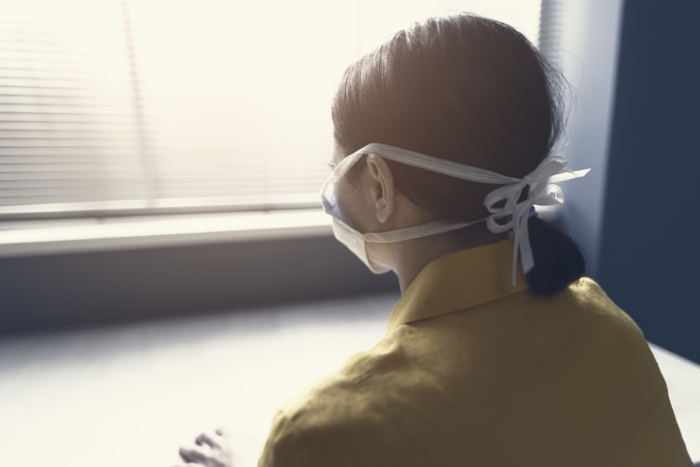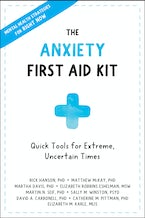These are extreme and uncertain times. From natural disasters to downsizing and automation to global pandemics that previously seemed unimaginable—not to mention political division about all of the above—we have more than enough to worry about.
When picking up this book, you likely sought relief from the burden of racing thoughts, obsessive thinking about worst case scenarios, or the nervous “always-on” feeling that anxiety leaves in your body. This book will help you feel better, but it is important to know that your feelings are valid. Even on good days, it can be hard not to feel like disaster is right around the corner and that we need to do everything we can to be ready for it.
As for bad days…we believe that this book can help. Just like the first aid kit stashed under the bathroom sink, this mental health toolkit can give you a welcome respite from panic and worry about the future so that you can focus on what you can do in the here and now.
In this short book, we have compiled forty of the easiest and most effective anxiety-reducing exercises, techniques, and practices from top mental health experts, all of whom have put these skills into practice with clients. In addition, all of these techniques come from evidence-based treatments. By “evidence-based,” we don’t just mean that the tools in this book have worked for decades with hundreds of clients—they have—but also that they have been tested and approved in research labs all over the world.
Perhaps you have heard about cognitive behavioral therapy, mindfulness-based stress reduction, or neuroscience. If you have, then 2 you might have a sense of how this book will help you. If you haven’t, don’t worry. Knowing these therapies is not important when it comes getting the most out of this book. In these pages, we want you to focus on improving your mood, getting a better understanding of your thoughts, and making sure you are living in accordance with what really matters to you. But we’ve also included a short suggested reading list at the end of this book for those interested in learning more about any of these therapies.
This book starts by teaching you techniques to calm down before you start working on the more difficult work of managing anxious thoughts and feelings. If you’re able, we recommend working through it from beginning to end, because it’s easier to work on your anxiety once you’ve established a baseline of calm, or non-reactivity.
This book is also designed to get you what you need when you need it, so there’s no need to try all of the relaxation techniques if you already know what works for you. Similarly, if as you practice you find that exercise 9, “Relaxing Visualization,” for example, works well for you, simply make it a habit and move on to the next part. All of the techniques in this book can be used in a moment’s notice—as needed and on demand. They are flexible enough to work with any kind of anxious thought or worry, so feel free to jump in and out. Perhaps leaving the book on the coffee table—or somewhere else where it is readily available—can help you find relief when you need it.
As you move through the book, try to bring whatever amount of playfulness you can to these exercises and techniques. It is important to keep an open mind. That said, if something doesn’t feel like it is working for you, drop it and move on to something else. In this book, you are the priority.
These times truly are distressing, but finding a moment to take care of your mental health doesn’t have to be. With that, let’s take a deep breath and get started.
When anxiety and stress feel too intense to handle, readers need quick, in-the-moment relief—not psychological jargon. Written by a dream team of mental health experts and grounded in evidence-based therapy, The Anxiety First Aid Kit offers simple tools for triaging stress and anxiety in a crisis.



 2024 Peace Playbook: 3 Tactics to Avoid Clashes with Your Partner
2024 Peace Playbook: 3 Tactics to Avoid Clashes with Your Partner